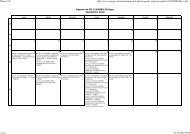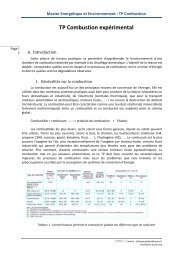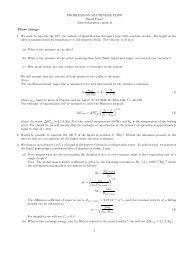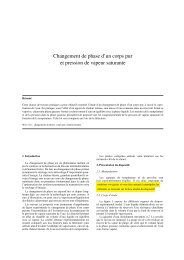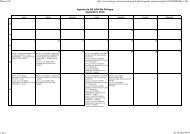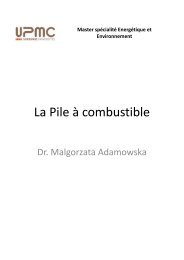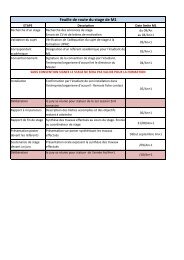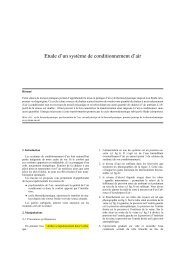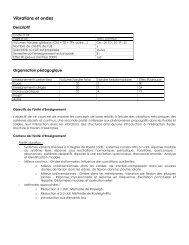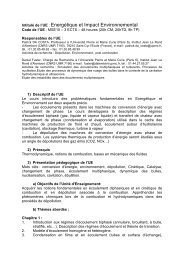CHAPITRE 1: Notions de thermodynamique - Master 2 en ...
CHAPITRE 1: Notions de thermodynamique - Master 2 en ...
CHAPITRE 1: Notions de thermodynamique - Master 2 en ...
You also want an ePaper? Increase the reach of your titles
YUMPU automatically turns print PDFs into web optimized ePapers that Google loves.
7. Elém<strong>en</strong>ts <strong>de</strong> thermochimie<br />
Gestion <strong>de</strong> l’Energie et Environnem<strong>en</strong>t<br />
Pouvoir calorifique<br />
Le pouvoir calorifique représ<strong>en</strong>te la quantité d’énergie dégagée par unité <strong>de</strong> masse du<br />
carburant lors <strong>de</strong> la réaction <strong>de</strong> combustion complète conduisant à la formation <strong>de</strong> CO 2<br />
et<br />
H 2<br />
O. Le carburant est pris, sauf m<strong>en</strong>tion contraire, à l’état liqui<strong>de</strong> et à une température <strong>de</strong><br />
référ<strong>en</strong>ce, généralem<strong>en</strong>t 298 K.<br />
On fait la distinction <strong>en</strong>tre :<br />
• PCS : eau sous forme liqui<strong>de</strong> dans les produits <strong>de</strong> combustion,<br />
• PCI : eau sous forme vapeur (c’est la seule gran<strong>de</strong>ur véritablem<strong>en</strong>t utile <strong>en</strong> pratique).<br />
PCI = PCS – Lv<br />
<strong>CHAPITRE</strong> 1: <strong>Notions</strong> <strong>de</strong> <strong>thermodynamique</strong><br />
37




